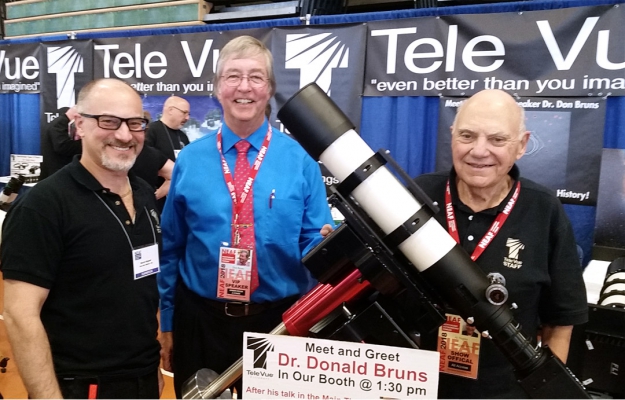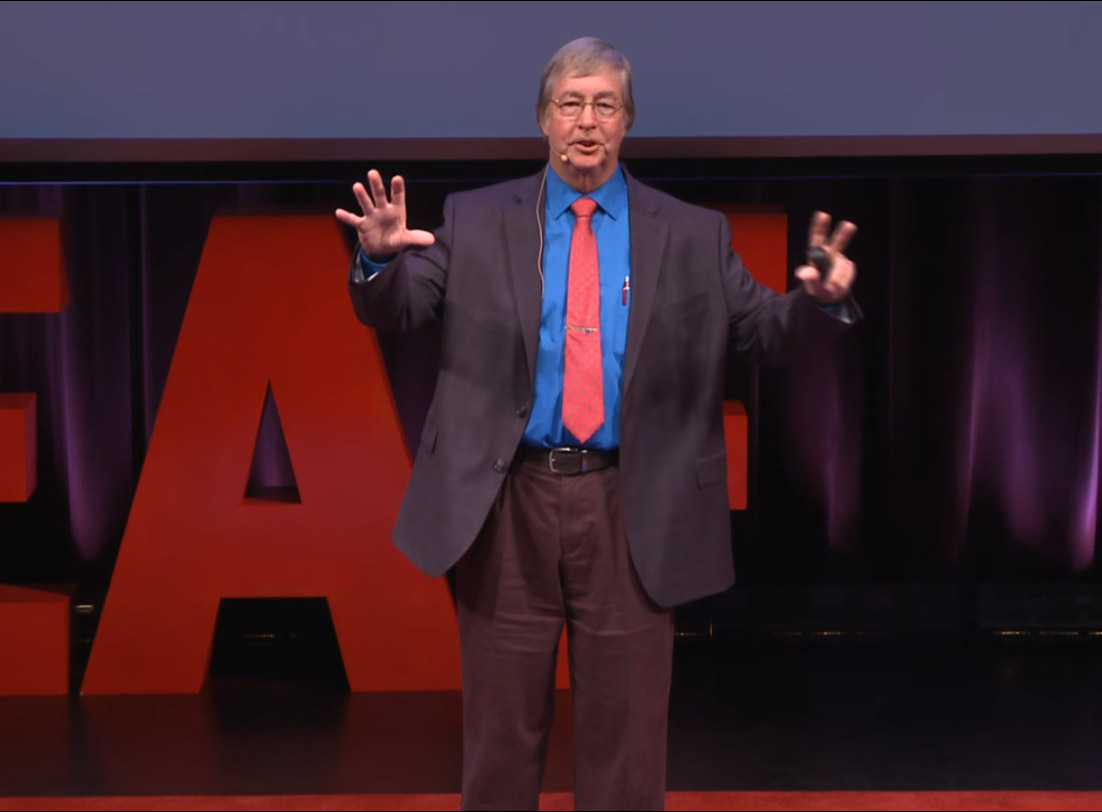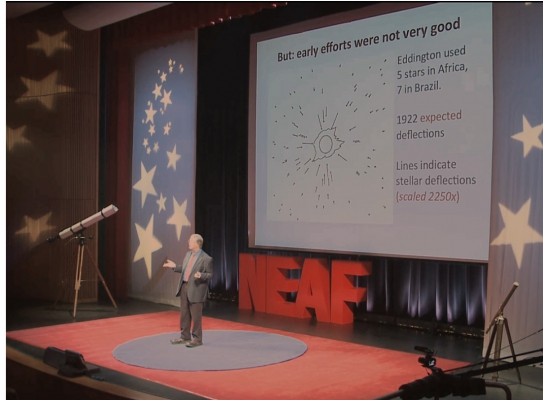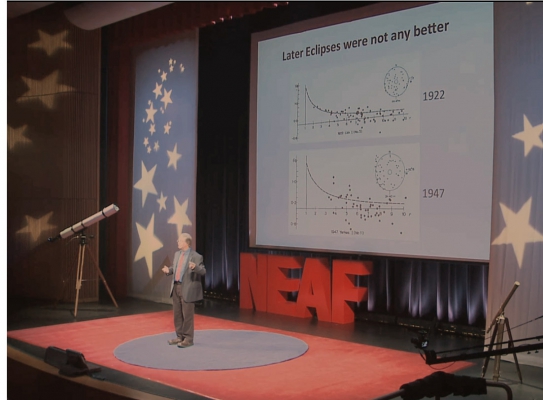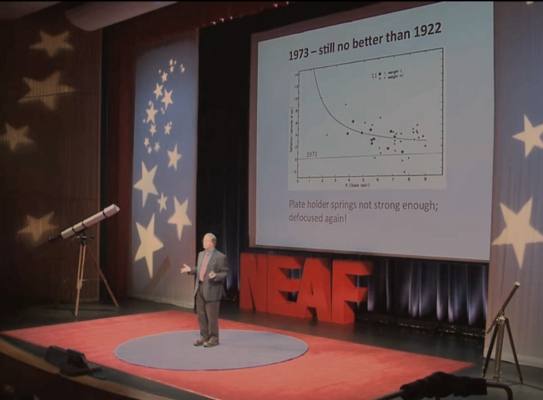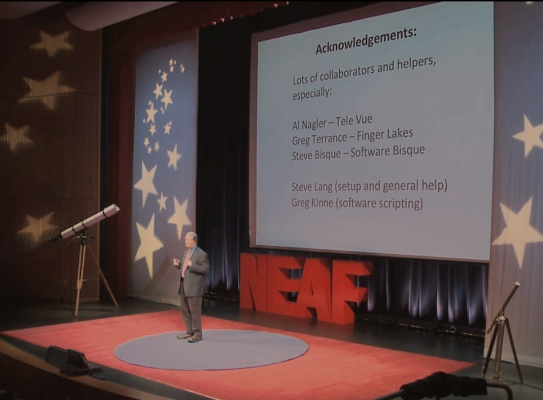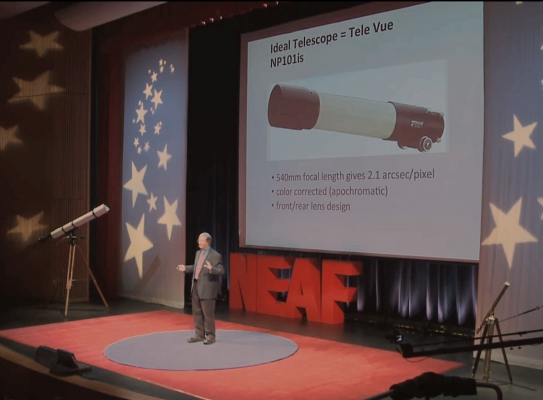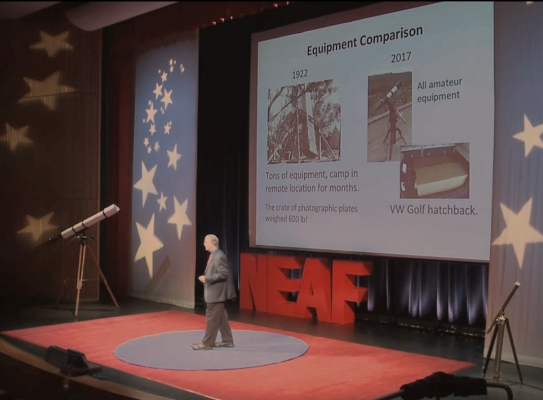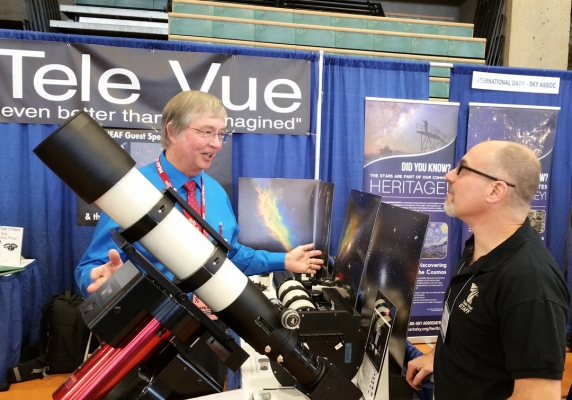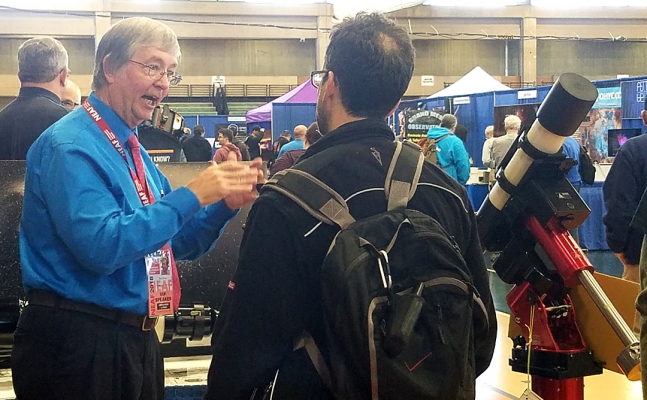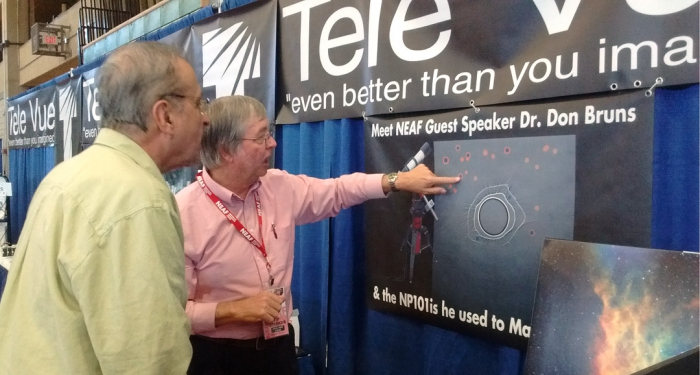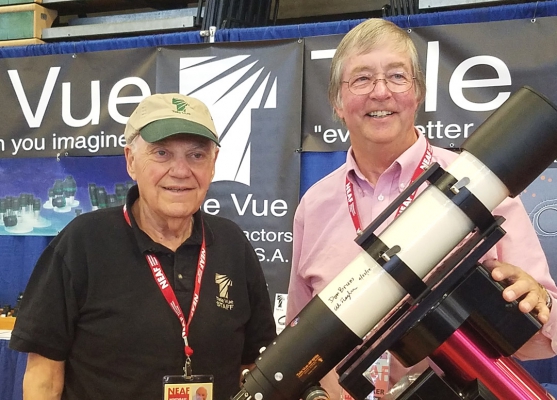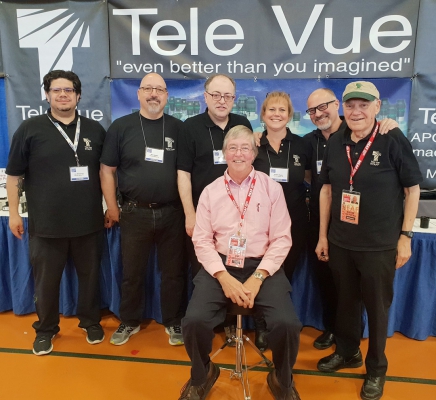Dr. Bruns at NEAF 2018
We were honored that Northeast Astronomy Forum (NEAF) speaker Dr. Donald Bruns was able to visit in our booth over the two days of NEAF 2018.
Saturday, April 21, at noon, Dr. Bruns stepped onto the main stage at NEAF in front of a standing-room-only audience. His talk was titled: Einstein was Right! Completing the 1919 Relativity Experiment at the 2017 Solar Eclipse. Over the better part of an hour, he explained how Einstein’s General Theory of relativity predicted the bending of light in gravitational fields and how astronomers have attempted to photograph stars near the eclipsed sun to verify the theory.
Dr. Bruns NEAF 2018 Talk
In 2015, Dr. Bruns, a retired optical physicist and 50-year amateur astronomer, got the idea that readily available, modern, amateur equipment could best the accuracy of this experiment conducted by professionals over the last century. He set his sights on conducting his own Einstein star deflection experiment during the August 2017 Great American Eclipse.
Upon outlining his equipment requirements to achieve the necessary experimental precision, his search for a precision, wide field instrument led him to the flat-field, portable Tele Vue-NP101is (Nagler-Petzval APO) telescope to image the star field near the Sun during the eclipse. In a Sky & Telescope article before the eclipse, Dr. Bruns explains that he choose the Tele Vue scope because he needed “to pinpoint the centers of star images to within 0.02-pixel, those stars falling near the edges and corners of each frame must be as sharp as the ones in the center. The NP101is has a flat, color-free image plane, perfect for creating these very accurate star images, and I can adjust the focuser so that the camera remains perfectly square to the optical axis.” For the camera he selected a Finger Lakes Instrumentation Microline 8051 CCD camera. The scope and camera were mounted on a Software Bisque MyT Paramount with field tripod. This made for a compact, readily transportable system that fit in his VW hatchback — a huge contrast to the giant telescopes and fragile glass plates used to image eclipses in all prior attempts.
Dr. Bruns started his imaging runs in the spring of 2017, before the eclipse, by taking nighttime and twilight (to simulate star visibility in the eclipsed sky) images of the stars that would be near the sun during the August eclipse. This calibration data was used in conjunction with performance data from Tele Vue to characterize any distortion present in the system so that it could be eliminated as a variable in his images. Bruns also did some simulated data acquisition and data reduction to verify his experiment.
After careful planning, the actual experiment on the day of the eclipse went smoothly. There were no equipment failures or clouds that frequently beset breakthrough astronomical experiments. After months of data reduction, Dr. Bruns arrived at the conclusion that starlight passing at the very edge of the sun would deflect by 1.7512-arcseconds. Based on Einsteins equations he calculated the theoretical value as 1.7512-arcseconds — exactly the same! He admits it was a coincidence that the numbers agreed as he calculated the experimental value with an uncertainty of 3%.
For his ground-breaking efforts conducting this experiment as an amateur astronomer, Dr. Bruns received the American Astronomical Society’s Chambliss Amateur Achievement Award. His award citation reads: “For his successful recreation of, and improvement upon, Eddington’s iconic deflection-of-light experiment during the 2017 total solar eclipse, which represents a tour de force in careful observing and calibration.” Tele Vue Optics congratulates Dr. Bruns on this outstanding achievement and thanks him for selecting our Tele Vue-NP101is refractor to have been part of it.
Right after the presentation, Dr. Bruns was kind enough to spend time in our booth in the vendor area. In fact, he came back both on Saturday (blue shirt) and Sunday (pink shirt). The pink shirt he wore Sunday was the same one he wore when imaging the eclipse!
We were also excited to display the actual Tele Vue-NP101is used by Dr. Bruns in our booth — along with a banner displaying the experimental data used in his calculations. A highlight of of his Sunday appearance in our booth was his signing the telescope along with the scope’s designer Al Nagler.
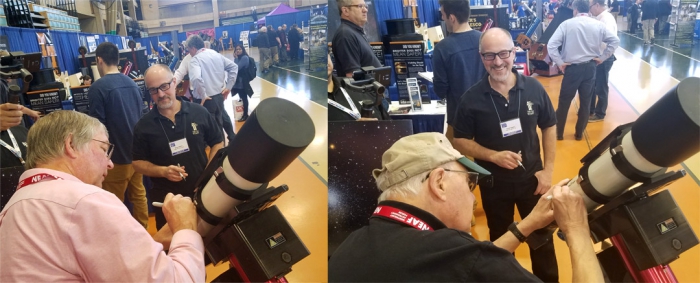
You can watch a YouTube video of the signing below.
Dr. Bruns also sat for a group photo with the Tele Vue staff.
- Tele Vue-NP101is page (mobile site)
- YouTube audio start of Dr. Bruns NEAF 2018 talk


Did you observe, sketch, or image with Tele Vue gear? We’ll like your social media post on that if you tag it #televue and the gear used. Example:
#televue #np101is #solareclipse
Do you want your Tele Vue images re-posted on Tele Vue Optics’ Social Media accounts? Use this hashtag for consideration:
#RPTVO

